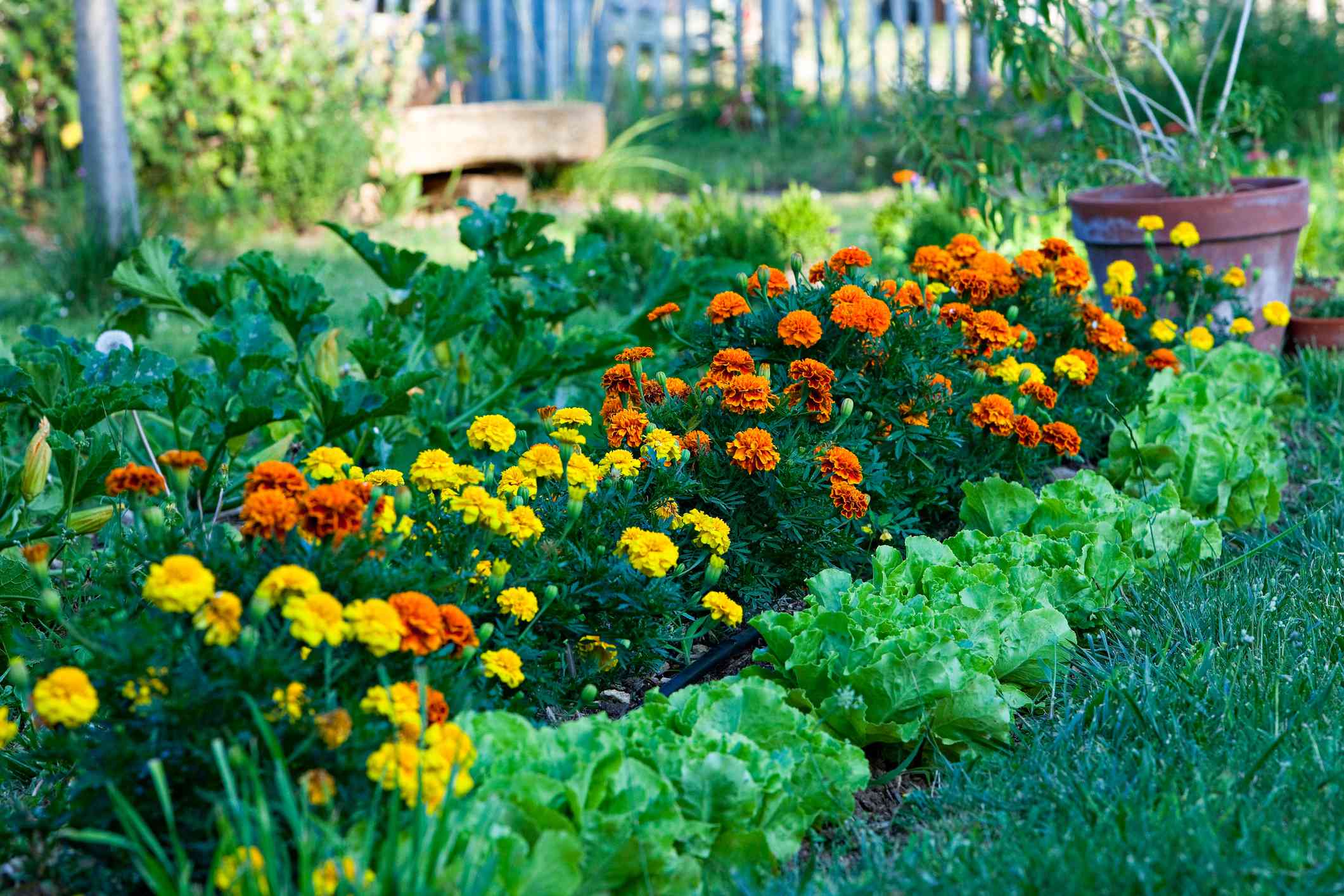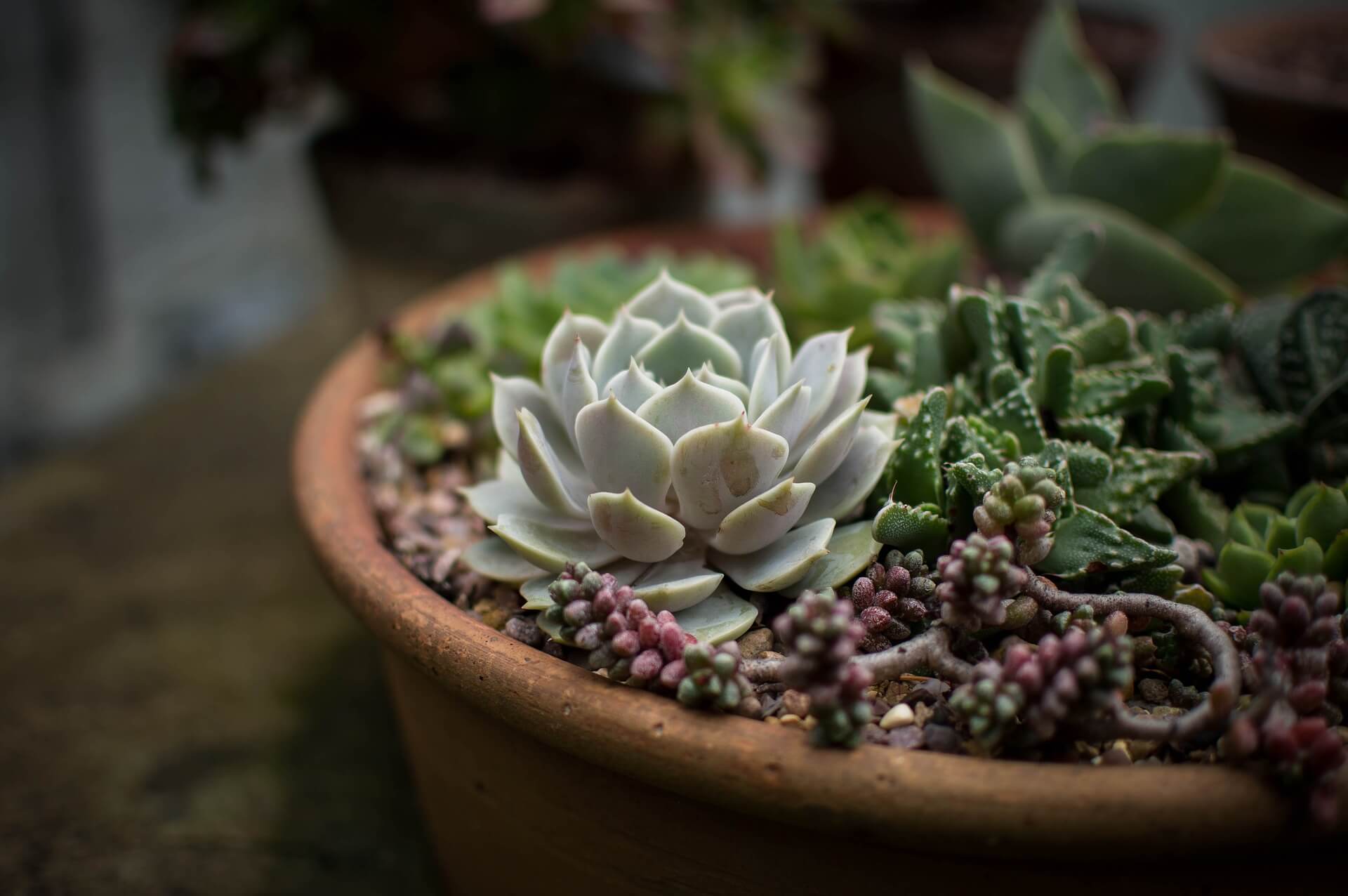Home>Types of Gardening>Ornamental Gardening>Which Marigolds Are Best For Companion Planting


Ornamental Gardening
Which Marigolds Are Best For Companion Planting
Modified: January 22, 2024
Discover the best marigolds for companion planting in your ornamental garden. Enhance the beauty and productivity of your plants with these ideal choices.
(Many of the links in this article redirect to a specific reviewed product. Your purchase of these products through affiliate links helps to generate commission for Chicagolandgardening.com, at no extra cost. Learn more)
Table of Contents
Introduction
Welcome to the wonderful world of ornamental gardening! If you’re an avid gardener looking to create a stunning and vibrant garden, you’ve come to the right place. In the realm of ornamental gardening, there are countless plants and flowers to choose from, each with its own unique attributes and beauty. One such plant that deserves special attention is the marigold.
Marigolds are not only a beautiful addition to any garden, but they also offer several benefits when it comes to companion planting. Companion planting refers to the practice of strategically placing different plants together to enhance their growth, improve pest resistance, and maximize yields. By understanding how marigolds can play a role in companion planting, you can create a harmonious and thriving garden ecosystem.
In this article, we will dive into the world of marigolds as companion plants and explore the factors to consider when choosing the right varieties for your garden. We will also provide a comprehensive list of the best marigold varieties for different companion plants. Whether you’re aiming to repel pests, attract beneficial insects, or enhance the growth of your favorite plants, marigolds can be your secret weapon.
So, if you’re ready to embark on a journey of beautiful blooms and flourishing foliage, let’s explore the fascinating world of marigolds and discover their immense potential as companion plants.
Benefits of Companion Planting
Companion planting is not just a fancy gardening technique; it offers a multitude of benefits that can significantly improve the health and productivity of your garden. Let’s take a closer look at some of the key advantages of practicing companion planting:
- Pest Control: One of the main benefits of companion planting is its ability to naturally control pests. Certain plants, when grown together, can repel or deter harmful insects, reducing the need for chemical pesticides. For example, marigolds emit a strong fragrance that acts as a natural deterrent against many common garden pests, such as aphids, nematodes, and whiteflies, protecting neighboring plants from infestation.
- Enhanced Pollination: Companion planting can also attract pollinators such as bees, butterflies, and hummingbirds, which are essential for the fertilization of flowers and the production of fruits and seeds. By incorporating flowering plants, like marigolds, within your garden, you can create an inviting habitat for these beneficial pollinators, increasing the yield and quality of your crops.
- Improved Soil Health: Different plants have unique nutrient requirements, root systems, and growth habits. By interplanting complementary species, you can optimize the use of soil nutrients and minimize the risk of nutrient depletion. Some plants, like legumes, have the ability to fix nitrogen in the soil, benefiting neighboring plants that require this essential nutrient. Additionally, certain plants, like marigolds, have deep taproots that help break up compacted soil, improving drainage and aeration.
- Weed Suppression: Companion planting can help suppress weed growth by creating a dense canopy or ground cover. When plants are densely spaced and intercropped, they reduce the amount of bare soil available for weed growth. Additionally, some plants release chemicals or allelopathic compounds that inhibit the germination and growth of weeds, providing a natural weed control mechanism for your garden.
- Biodiversity and Habitat Creation: Companion planting promotes biodiversity in your garden by attracting a diverse array of insects, birds, and beneficial organisms. This creates a balanced ecosystem that supports natural pest control and enhances the overall health of the garden. By incorporating a variety of plants, including marigolds, you can provide food, shelter, and breeding grounds for beneficial insects like ladybugs, lacewings, and hoverflies, which feed on harmful garden pests.
By harnessing the benefits of companion planting, you can create a thriving, sustainable, and eco-friendly garden that is not only visually stunning but also harmonious and resilient against pests and diseases. So, let’s explore how marigolds can play a vital role in companion planting and enhance the health and vitality of your garden.
Marigolds as Companion Plants
Marigolds have long been recognized as valuable companion plants in the garden. With their vibrant hues of orange, yellow, and red, marigolds not only add a pop of color to your garden, but they also offer numerous benefits to neighboring plants.
One of the main reasons marigolds are favored as companion plants is their ability to repel pests. Marigolds release a strong fragrance that acts as a natural deterrent against various pests, including aphids, nematodes, and whiteflies. This attribute makes marigolds particularly effective at protecting vulnerable plants from insect infestations. In addition to repelling pests, marigolds also attract beneficial insects such as ladybugs and lacewings, which feed on harmful garden pests. The presence of marigolds can create a balanced ecosystem, reducing the need for chemical pesticides.
Another benefit of marigolds is their ability to improve the health of the soil. Marigolds have a deep taproot system that can help break up compacted soil, enhancing drainage and aeration. Additionally, marigolds are known to produce natural compounds that suppress the growth of certain soil-borne pathogens, such as nematodes. Planting marigolds as a border or intercropping them among susceptible plants can help protect the roots and prevent the spread of diseases.
Furthermore, marigolds can contribute to the overall biodiversity of your garden. The vibrant flowers of marigolds attract pollinators like bees and butterflies, aiding in the fertilization of other flowering plants. Their bright and colorful blooms create a visually appealing environment and can act as a natural magnet for beneficial insects.
When choosing marigolds for companion planting, consider the variety and height of the plants. French marigolds (Tagetes patula) are smaller in size and are well-suited for interplanting in vegetable gardens and flower borders. African marigolds (Tagetes erecta) are larger and are ideal for creating a striking visual display. Additionally, there are a range of marigold cultivars available, each with its own unique characteristics and growth habits.
In the next section, we will explore the factors to consider when selecting marigold varieties for companion planting. By choosing the right marigold varieties, you can optimize their benefits and create a successful and thriving garden ecosystem.
Factors to Consider When Choosing Marigolds for Companion Planting
When it comes to selecting marigolds for companion planting, there are several factors to consider. By carefully choosing the right marigold varieties, you can maximize their benefits and create a harmonious garden ecosystem. Here are some key factors to keep in mind:
- Pest-Repelling Properties: Different marigold varieties have varying degrees of pest-repelling properties. For optimal pest control, look for marigold varieties that are specifically bred for their pest-deterring characteristics. Some popular choices include ‘Lemon Gem’ marigold, which repels whiteflies, and ‘Tangerine Gem’ marigold, which is effective against aphids. Consider the pests you want to target in your garden and select marigold varieties accordingly.
- Plant Size and Habit: Marigolds come in different sizes and growth habits, ranging from compact to tall and bushy. Consider the overall size of your garden and the height of neighboring plants when selecting marigolds. Taller varieties, such as ‘Crackerjack’ marigolds, can add vertical interest and make a bold statement, while smaller varieties, like ‘Dainty Marietta’ marigolds, are better suited for interplanting with vegetables and smaller flowering plants.
- Flower Color: Marigolds are known for their vibrant colors, including shades of orange, yellow, and red. Consider the color scheme of your garden and choose marigold varieties that complement other plants. The bright hues of marigolds can create eye-catching contrasts or harmonious color combinations.
- Duration of Flowering: Some marigold varieties have a longer flowering period than others. Consider how long you want the marigolds to bloom in your garden. Some varieties, like ‘Harmony’ marigolds, have an extended blooming season, providing continuous color and nectar for pollinators. Other varieties, such as ‘French Vanilla’ marigolds, may have a shorter but more concentrated burst of blooms.
- Adaptability to Growing Conditions: Marigolds are generally easy-to-grow plants that thrive in full sun and well-draining soil. However, different varieties may have specific adaptability to certain growing conditions. Consider the climate and soil type in your region and choose marigold varieties that are well-suited to those conditions. Consult local gardening resources or nurseries for guidance on the best marigold varieties for your specific location.
By taking these factors into account, you can select marigold varieties that will not only enhance the beauty of your garden but also provide maximum benefits as companion plants. In the next section, we will explore some of the best marigold varieties for specific companion plants, helping you create the perfect combinations for a thriving and harmonious garden.
Best Marigold Varieties for Companion Planting
When it comes to companion planting, choosing the right marigold varieties can make a significant difference in the overall success of your garden. Here are some of the best marigold varieties that have proven to be excellent companions for specific plants:
1. French Marigolds (Tagetes patula): French marigolds are compact in size and make ideal companions for a variety of plants. For repelling insects such as whiteflies and aphids, consider varieties like ‘Bonanza Mix’, ‘Disco Orange’, or ‘Lemon Gem’. These marigolds are low-growing and can be interplanted in vegetable gardens or flower borders.
2. African Marigolds (Tagetes erecta): With their tall and sturdy nature, African marigolds create a striking visual display and work well as background or border plants. For companion planting, consider ‘Crackerjack’, ‘Inca II’, or ‘Antigua Mix’. These varieties not only repel pests but also attract pollinators with their large and vibrant blooms.
3. Signet Marigolds (Tagetes tenuifolia): Signet marigolds are smaller in size but pack a punch with their beautiful clusters of small, edible flowers. These marigolds are excellent companions for herbs, such as basil, parsley, and thyme. Consider varieties like ‘Lemon Gem’ or ‘Tangerine Gem’. They not only add aesthetic value but also repel pests like aphids and spider mites.
4. Mexican Marigolds (Tagetes lucida): Mexican marigolds, also known as Mexican mint marigolds, are aromatic plants that are often used in herb gardens. They make great companions for vegetables, especially tomatoes and peppers, as they deter insects like nematodes and whiteflies. ‘Mexican Mint Marigold’ is a popular variety that brings unique flavor and visual interest to the garden.
5. Calendula (Calendula officinalis): Calendula, also known as pot marigold, is a versatile companion plant that attracts beneficial insects and repels pests. Its bright orange and yellow flowers add a cheerful touch to the garden. Calendula is a wonderful companion for a wide range of vegetables and herbs, including tomatoes, cucumbers, and roses.
When planting marigolds as companions, spacing and placement are crucial. Place marigolds strategically around susceptible plants or in rows as borders to maximize their benefits. Intermingle marigolds with other companion plants to create a diverse and thriving garden ecosystem.
Remember that marigolds are not only beneficial for their pest-repelling properties but also contribute to the overall beauty and vibrancy of your garden. Experiment with different marigold varieties and combinations to find the perfect companions for your specific garden needs.
Now that you have a list of the best marigold varieties for companion planting, you can create a visually stunning, pest-resistant, and harmonious garden that will be the envy of your neighborhood.
Marigold Combinations for Specific Companion Plants
Choosing the right companions for your marigolds can further enhance the benefits they provide in your garden. Here are some specific companion plant combinations that work well with marigolds:
- Tomatoes: Marigolds are excellent companions for tomatoes, as they help repel pests like aphids and nematodes. Plant marigolds, such as ‘Crackerjack’ or ‘Bonanza Mix’, around the perimeter of your tomato plants to create a protective barrier against insect infestations.
- Cucumbers: Interplant marigolds alongside cucumbers to deter pests like cucumber beetles and aphids. The bright blooms of marigolds also attract pollinators, which can boost cucumber production. Consider planting ‘Lemon Gem’ or ‘Tangerine Gem’ marigolds alongside your cucumber vines.
- Herbs: Marigolds make fantastic companions for herbs. They repel pests while adding aesthetic value to the herb garden. Plant marigolds like ‘Lemon Gem’ or ‘Tangerine Gem’ alongside herbs such as basil, parsley, dill, or thyme to create an attractive and functional garden bed.
- Roses: Marigolds can help protect roses from pests and diseases. The strong fragrance of marigolds repels aphids and other common rose pests. Consider planting French marigolds like ‘Disco Orange’ or ‘Bonanza Mix’ around your rose bushes to create a beautiful and pest-resistant combination.
- Carrots: Carrots can greatly benefit from the presence of marigolds, as marigolds deter pests like carrot flies. Intercrop marigolds like ‘French Vanilla’ or ‘Dainty Marietta’ along the edges of your carrot beds to create a natural barrier against these pests.
- Peppers: Marigolds can provide protection for pepper plants by detering pests such as aphids and spider mites. Plant marigolds like ‘Antigua Mix’ or ‘Inca II’ alongside your pepper plants to create a stunning visual display while improving overall plant health.
These are just a few examples of marigold combinations for specific companion plants. Feel free to experiment and discover other successful pairings in your garden. Remember to consider the growth habits, sizes, and light requirements of both the marigolds and their companion plants to ensure compatibility and optimal growth.
By incorporating marigolds as companions, you not only create a visually appealing garden but also foster a healthier and more resilient environment for your plants. The strong pest-repelling properties, attractive blooms, and beneficial interactions make marigolds an invaluable asset in companion planting.
Now that you have an understanding of marigold combinations for specific companion plants, it’s time to get creative and transform your garden into a thriving and harmonious haven.
Conclusion
Companion planting with marigolds is a remarkable approach to enhancing the health, beauty, and productivity of your garden. Marigolds offer numerous benefits as companions, from repelling pests to attracting pollinators and improving soil health. By carefully selecting the right marigold varieties and combining them with compatible companion plants, you can create a thriving and harmonious garden ecosystem.
In this article, we explored the benefits of companion planting, with a focus on the unique attributes of marigolds. Their colorful blooms, pest-repelling properties, and ability to attract beneficial insects make them valuable additions to any garden. We also discussed the factors to consider when choosing marigold varieties for companion planting, such as pest-repelling properties, plant size, flower color, duration of flowering, and adaptability to growing conditions.
Furthermore, we provided a selection of the best marigold varieties for specific companion plants, including tomatoes, cucumbers, herbs, roses, carrots, and peppers. These combinations not only enhance the beauty of your garden but also provide pest control and improve overall plant health.
As you embark on your companion planting journey with marigolds, experiment with different combinations and observe the positive impact they have on your garden. Remember to consider the needs and growth habits of both marigolds and their companion plants to ensure a successful partnership.
So, whether you’re a seasoned gardener or just starting out, don’t underestimate the power of marigolds as companions in your garden. Incorporate them strategically, and watch as they contribute to the health, vitality, and beauty of your ornamental garden.
Happy gardening!







